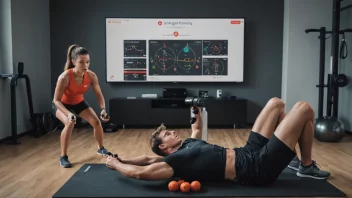In the age of technology, fitness gadgets have become essential tools for athletes and fitness enthusiasts alike. These devices can provide valuable insights into performance, health metrics, and training efficiency, while also enhancing safety during workouts. Understanding how to effectively integrate these gadgets into your training routines can significantly improve your performance and keep you safe. This article explores several key aspects of utilizing fitness gadgets to maximize your training outcomes.
First and foremost, heart rate monitors are fundamental gadgets for anyone serious about their training. They allow athletes to track their heart rate in real-time, which is crucial for optimizing workout intensity. By maintaining a target heart rate zone, athletes can ensure they are training effectively, whether they aim to build endurance, increase strength, or enhance overall cardiovascular fitness. Many modern heart rate monitors also sync with smartphones and provide comprehensive data analysis, allowing users to review their performance over time and adjust their training plans accordingly.
Another innovative tool is the GPS-enabled smartwatch or fitness tracker. These devices provide crucial information about distance, pace, and route during outdoor activities like running, cycling, or hiking. By analyzing this data, athletes can identify trends and areas for improvement, such as pacing strategies or optimal routes. Additionally, many smartwatches include features that track elevation changes and other environmental factors, which can further inform training decisions and enhance performance.
Wearable technology, such as smart clothing or fitness bands, is also gaining traction in the athletic community. These gadgets are designed to monitor various metrics, including muscle activity, body temperature, and even sleep patterns. By collecting data on muscle performance and fatigue levels, athletes can tailor their training regimens to avoid injury and improve recovery times. Understanding how the body responds to training stress can lead to more effective workout strategies and better long-term performance.
For those involved in high-impact sports, safety equipment integrated with technology can significantly enhance training. For example, helmets equipped with sensors can monitor impact forces, providing real-time feedback on the safety of training practices. This technology not only helps athletes stay safe but also informs coaches and trainers about the effectiveness of training drills and the need for adjustments.
Lastly, mobile apps designed for fitness are a valuable addition to any training program. These applications often include workout plans, instructional videos, and community features that encourage motivation and accountability. By using these apps, athletes can access diverse training methodologies, track their progress, and set specific goals. Many apps also allow for integration with other fitness gadgets, creating a comprehensive training ecosystem that provides multi-faceted insights.
In conclusion, fitness gadgets are powerful allies in the pursuit of athletic performance. By leveraging heart rate monitors, GPS devices, wearables, safety equipment with technology, and fitness apps, athletes can gain critical insights into their training processes. This data allows for informed decision-making, helping to optimize performance while prioritizing safety. Embracing these innovations not only enhances training effectiveness but also fosters a culture of safety and awareness, ensuring that athletes can push their limits responsibly.
How to Use Fitness Gadgets to Improve Training Performance
Discover how fitness gadgets can enhance your training performance while ensuring safety during workouts.






